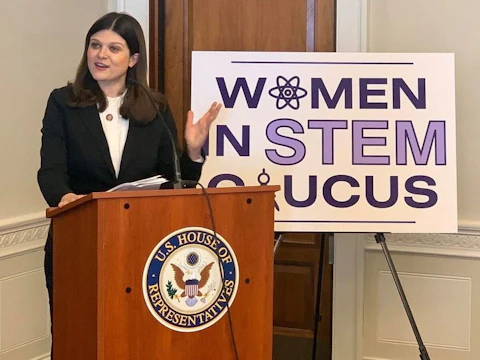Michigan is already looking ahead to November, and The ‘Gander has what you need to know from getting your ballot to the races to watch.
This article is part of COURIER’s Your Vote 2020 hub. For more stories from each of the battleground states, along with national reporting, visit the site here.
MICHIGAN — As Election Week for Michigan’s primary comes to a close, the focus becomes the vote ahead in November. You can even already request your absentee ballot for the general election.
Challenges exposed by August’s primary election and postal delays in late July have made looking ahead early more important than ever. While voter registration must be received by Oct. 20 and absentee ballot requests by Oct 30, mail delays make sending those documents, as well as the ballot itself, as early as possible important.
We’re breaking down what you need to know as Michigan moves toward the next stage of the presidential election.
The 3 Steps to Get Your Ballot
- REGISTER: The first step to getting a ballot is making sure you’re registered to vote. In Michigan, you can register to vote online through the Secretary of State’s website. To register remotely, Michiganders must submit their registration by Oct. 20, but can register on election day if they do so in person.
- REQUEST: The next step is to request an absentee ballot, which Michganders can also do online. Michigan has also mailed all registered voters in the state absentee ballot applications, on which voters may have already requested an absentee ballot. If you already have requested a ballot and attempt to again through the online system, you will be notified one is already being mailed to you.
- DROP OFF: Though an absentee ballot must be requested by Oct. 30, voters are encouraged to send applications and ballots in early as the ballots must be received by 8 p.m. on election day. Another option is to drop off an absentee ballot at a designated drop box designed to collect votes securely.
Who Is Running in November
SENATE
Michigan’s Senate election will be a close call between first-term incumbent Gary Peters and challenger John James. James has been a close supporter of President Donald Trump (at least in private) for years, saying he was “2,000%” behind the President during his failed bid to unseat Democratic Sen. Debbie Stabenow in 2018.
PRESIDENT
And, of course, the race between Trump and his Democratic rival Joe Biden will be a major driver of the rest of the election in November. Michigan will be a key state in the contest between the two.
With Michiganders largely distrusting Trump’s handling of the coronavirus pandemic and Biden’s messaging resonating with sectors of the economy Trump has either hurt or ignored, it will be critical to both candidates to make their case to Michiganders.
CONGRESS
There are also a handful of competitive elections for Michigan’s representatives in Washington which will be decided in November. Michigan sends more than a dozen congresspeople to represent it, and most are likely to favor the incumbent. Some are closer contests though.
In Michigan’s 6th Congressional District near-30-year incumbent Fred Upton’s support has been gradually eroding over the past few elections. He’s being challenged by Jon Hoadley, favored to win the district by a narrow margin in polls. Hoadley has been a mainstay in Kalamazoo politics for over a decade, since he moved to the city to helm the OneKalamazoo campaign to pass a local LGBT nondiscrimination ordinance.
READ MORE: Michigan Primary Results: 6 Things You May Have Missed
Michigan’s 8th Congressional District was flipped by Democrat Elissa Slotkin in 2018. Consensus data aggregated by 270 to Win suggests Slotkin is likely to keep her district in November, but the race is seriously contested. Slotkin will be running against Lansing-area news anchor Paul Junge, Slotkin worked for the Central Intelligence Agency, while Junge worked for the Trump Administration in the U.S. Citizenship and Immigration Services.
Michigan’s 3rd and 11th districts, where Republican Peter Meijer and Democratic incumbent Haley Stevens respectively are favorites to win, will also be competitive races.
Doing Your Research — 4 Places to Start
There are a lot of other races on the ballot in November, from judicial elections to boards of governors for universities. It can be a lot to research.
Primary voters told The ‘Gander that voting absentee allows voters more ability to do that research and vote on every race feeling informed.
Key resources for that include the League of Women Voters and their new voter information website Vote411. Other online resources include Ballotpedia and OnTheIssues which provide overviews of candidates proposals and accomplishments.
And of course, voters can subscribe to The ‘Gander’s free daily newsletter to follow our coverage of the election throughout November.
Key Deadlines to Remember
Given uncertainties in the postal service, voters should not wait to the last minute to submit paperwork or ballots. The following deadlines are the dates paperwork and ballots must be received by, regardless of when they are postmarked.
OCTOBER 19: When the USPS suggests sending absentee ballots by mail.
OCTOBER 20: The last day to register to vote remotely.
OCTOBER 30: The last day to request an absentee ballot.
NOVEMBER 3: The election. Clerks must have any absentee ballots in their possession by 8 p.m..
You can already start the process by registering to vote and requesting an absentee ballot online.





